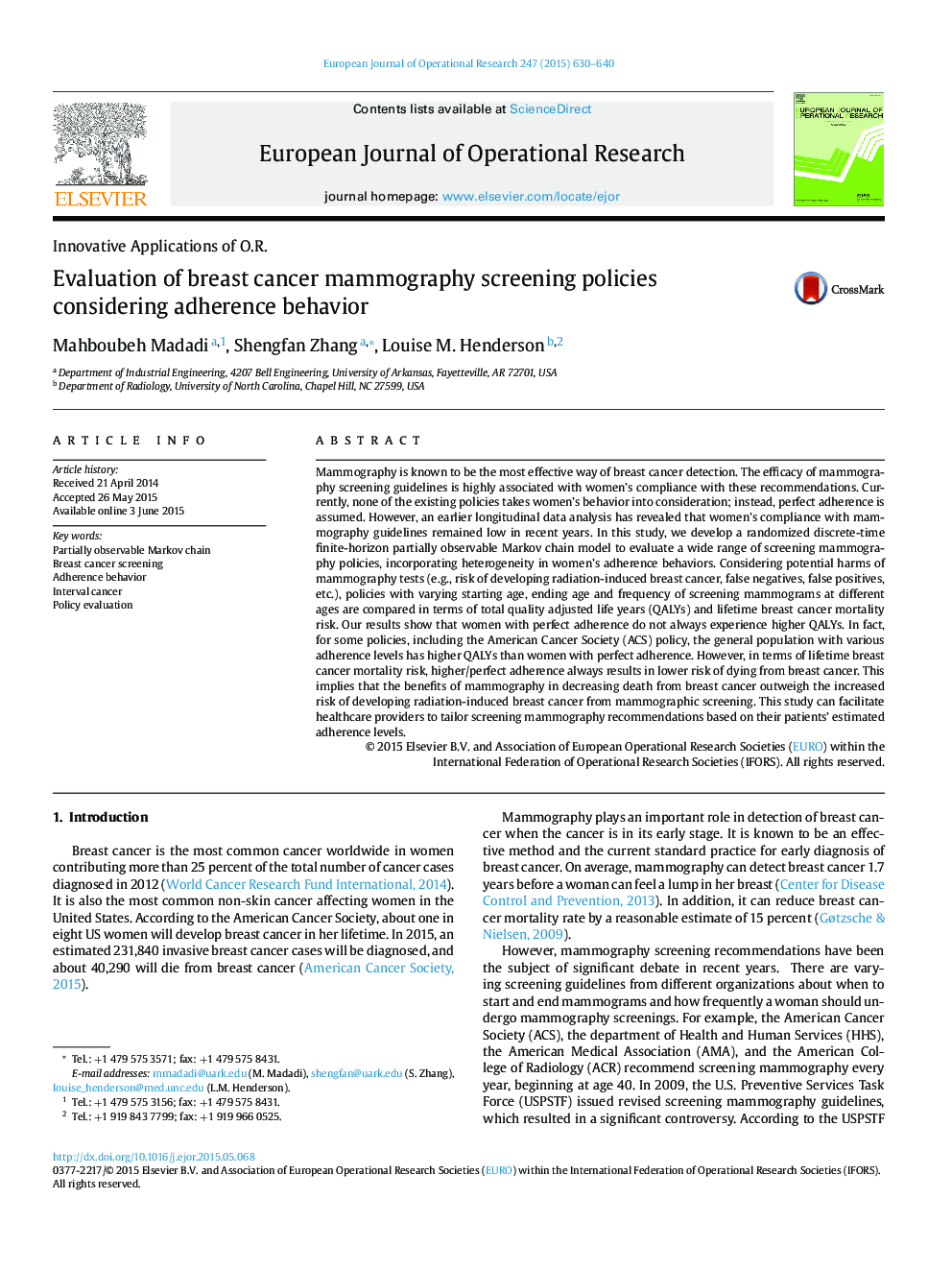| Article ID | Journal | Published Year | Pages | File Type |
|---|---|---|---|---|
| 6896401 | European Journal of Operational Research | 2015 | 11 Pages |
Abstract
Mammography is known to be the most effective way of breast cancer detection. The efficacy of mammography screening guidelines is highly associated with women's compliance with these recommendations. Currently, none of the existing policies takes women's behavior into consideration; instead, perfect adherence is assumed. However, an earlier longitudinal data analysis has revealed that women's compliance with mammography guidelines remained low in recent years. In this study, we develop a randomized discrete-time finite-horizon partially observable Markov chain model to evaluate a wide range of screening mammography policies, incorporating heterogeneity in women's adherence behaviors. Considering potential harms of mammography tests (e.g., risk of developing radiation-induced breast cancer, false negatives, false positives, etc.), policies with varying starting age, ending age and frequency of screening mammograms at different ages are compared in terms of total quality adjusted life years (QALYs) and lifetime breast cancer mortality risk. Our results show that women with perfect adherence do not always experience higher QALYs. In fact, for some policies, including the American Cancer Society (ACS) policy, the general population with various adherence levels has higher QALYs than women with perfect adherence. However, in terms of lifetime breast cancer mortality risk, higher/perfect adherence always results in lower risk of dying from breast cancer. This implies that the benefits of mammography in decreasing death from breast cancer outweigh the increased risk of developing radiation-induced breast cancer from mammographic screening. This study can facilitate healthcare providers to tailor screening mammography recommendations based on their patients' estimated adherence levels.
Related Topics
Physical Sciences and Engineering
Computer Science
Computer Science (General)
Authors
Mahboubeh Madadi, Shengfan Zhang, Louise M. Henderson,
